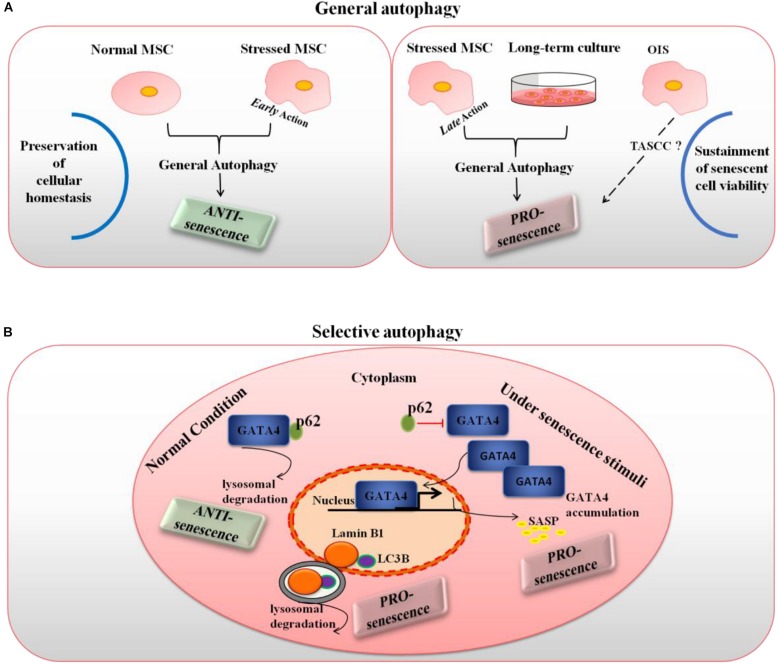FIGURE 1.
Type of autophagy, time of action and context as the frame to explain the dual role of autophagy in MSC senescence. (A) General autophagy, under normal conditions and when exerting early action in stressed cells, is mainly anti-senescence as it maintains cellular homeostasis; however, in late stressed and long-term cultured MSCs (pro-senescent cells) autophagy becomes pro-senescence as it can manage several senescence-associated stresses maintaining senescent cell viability; it is also possible that, under OIS, a specialized form of general autophagy known as TASCC might occur in MSCs. (B) Selective autophagy is pro or anti-senescence depending on the specific substrates and context involved: in normal conditions, p62-dependent autophagy specifically degrades GATA4, a main regulator of the SASP, thus actively suppressing cellular senescence, yet when the cell encounters senescence-inducing stimuli, a steady decrease of the interaction between GATA4 and p62 occurs and accumulated GATA4 transcriptionally activates the SASP; on the other hand, LC3B-lamin B1-dependent selective autophagy of nuclear lamina acts as a pro-senescence mechanism.

